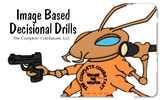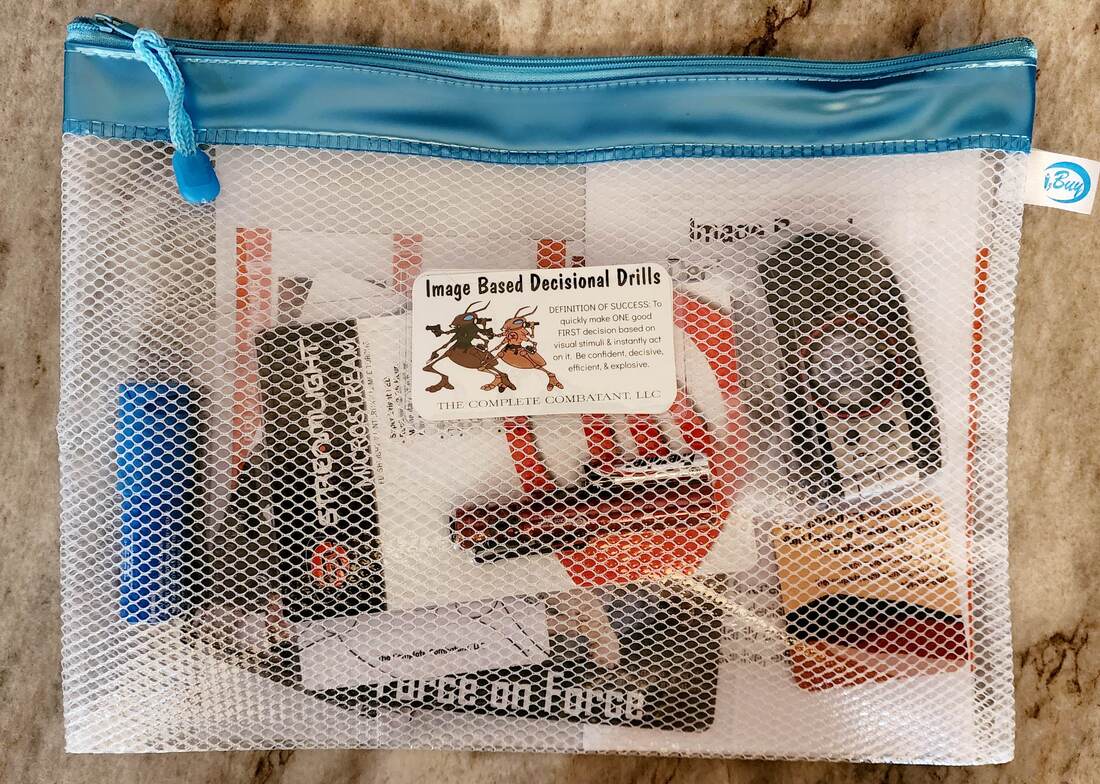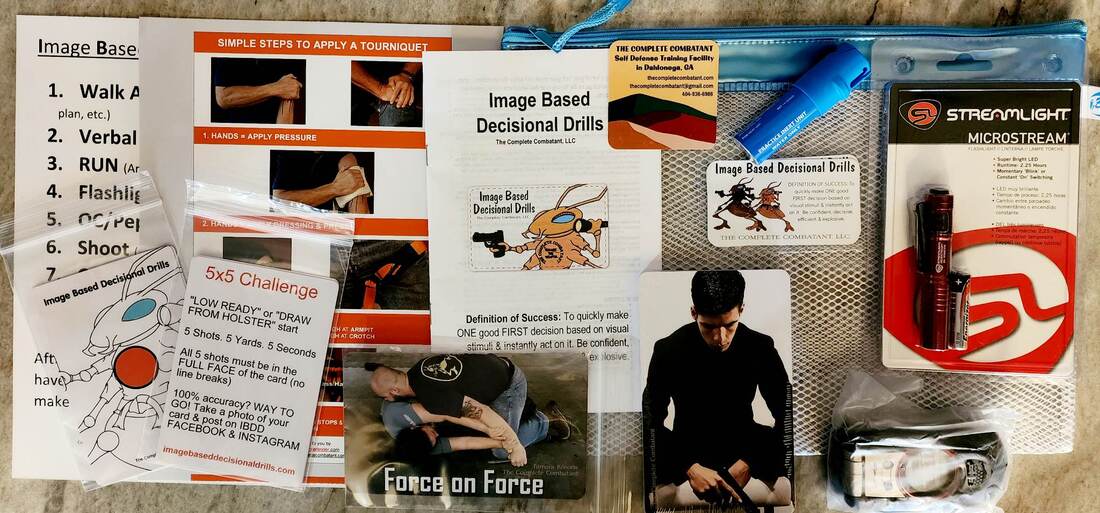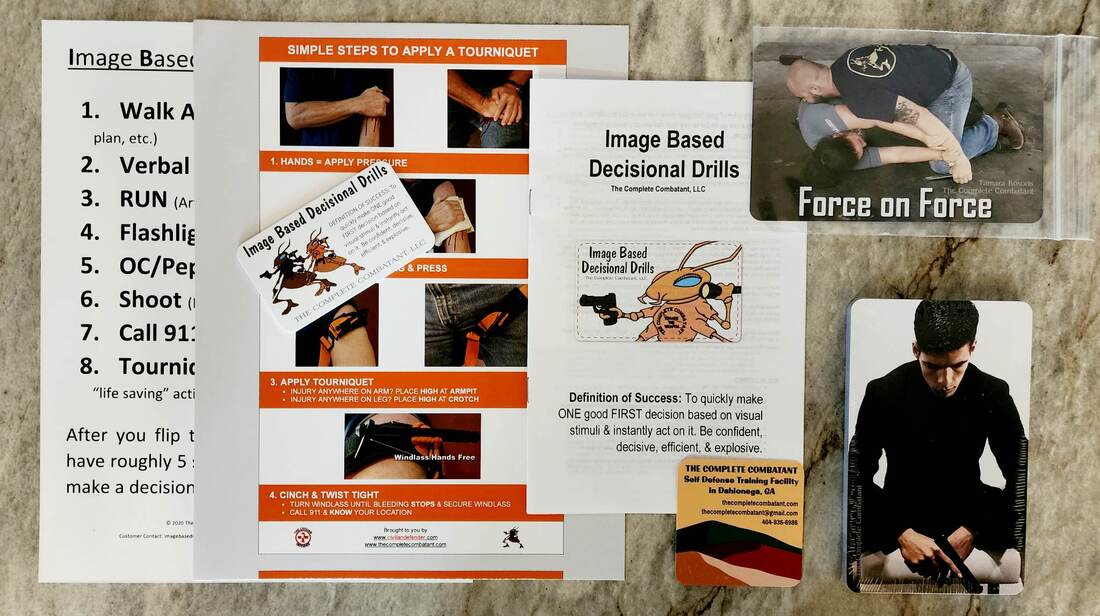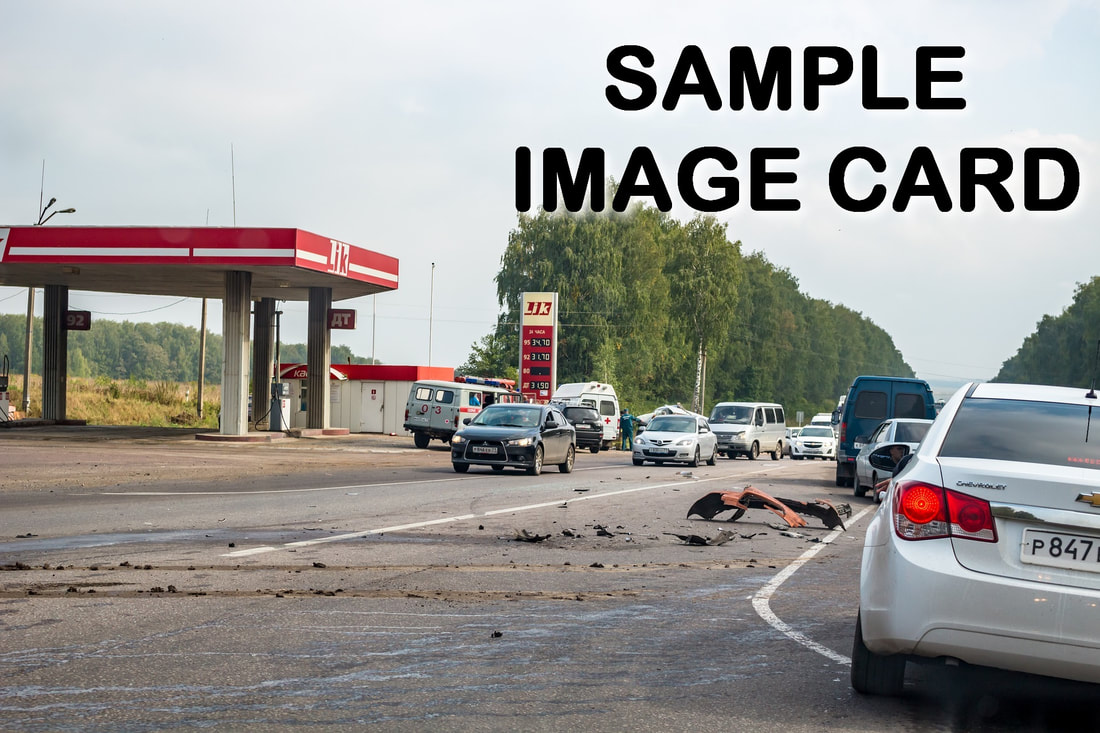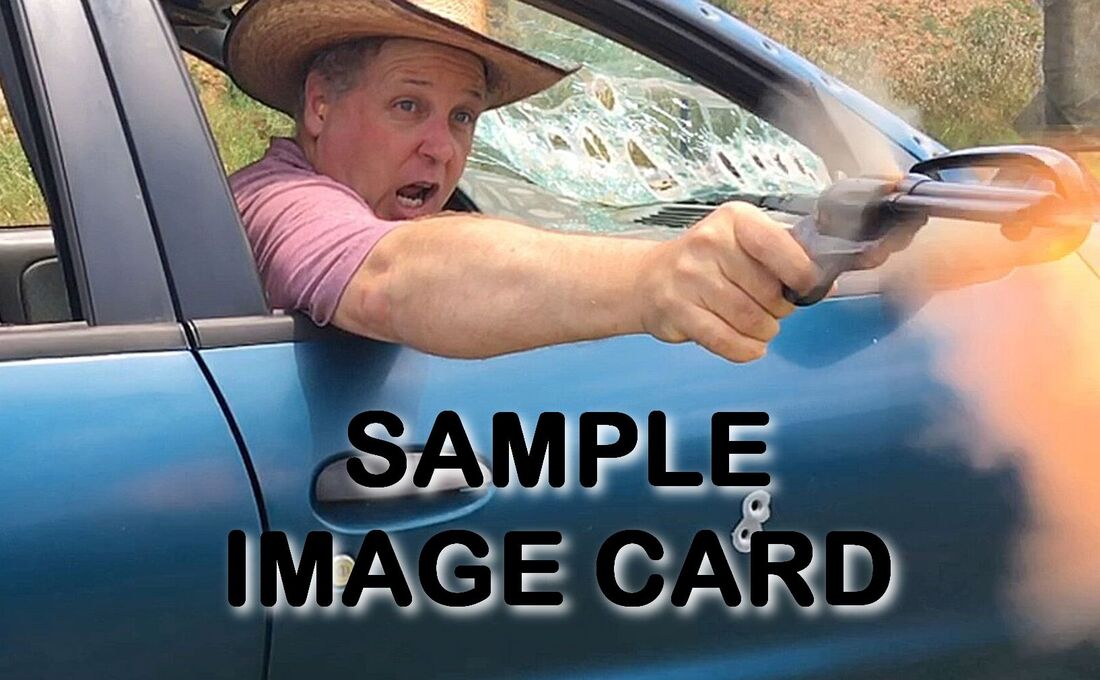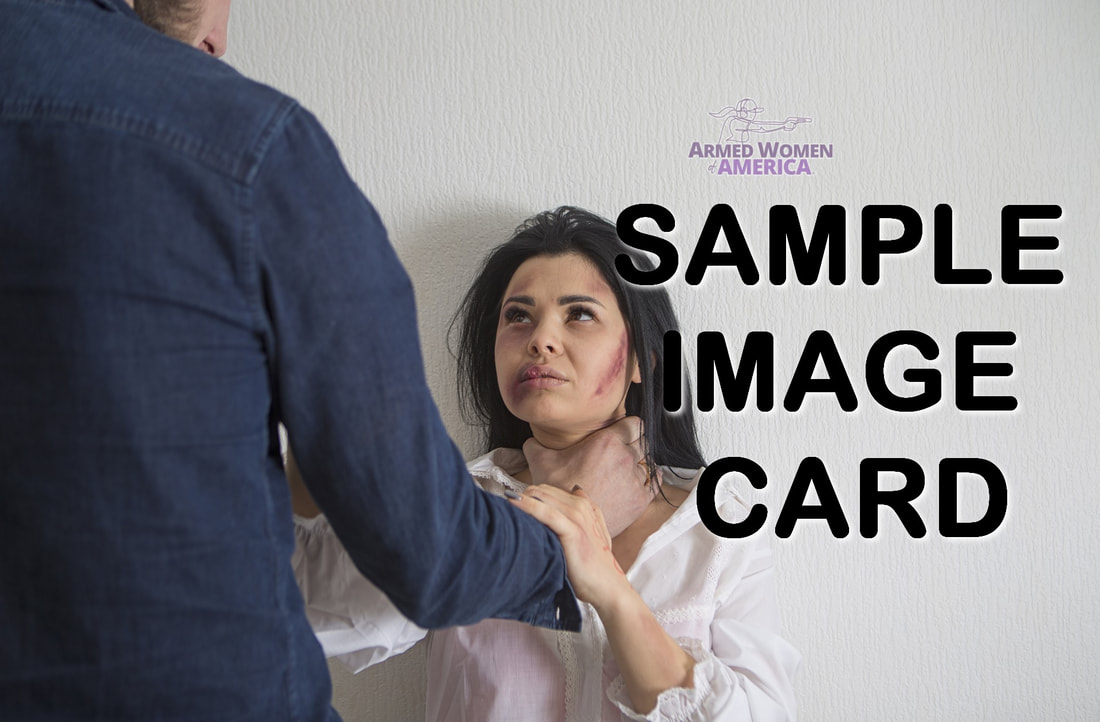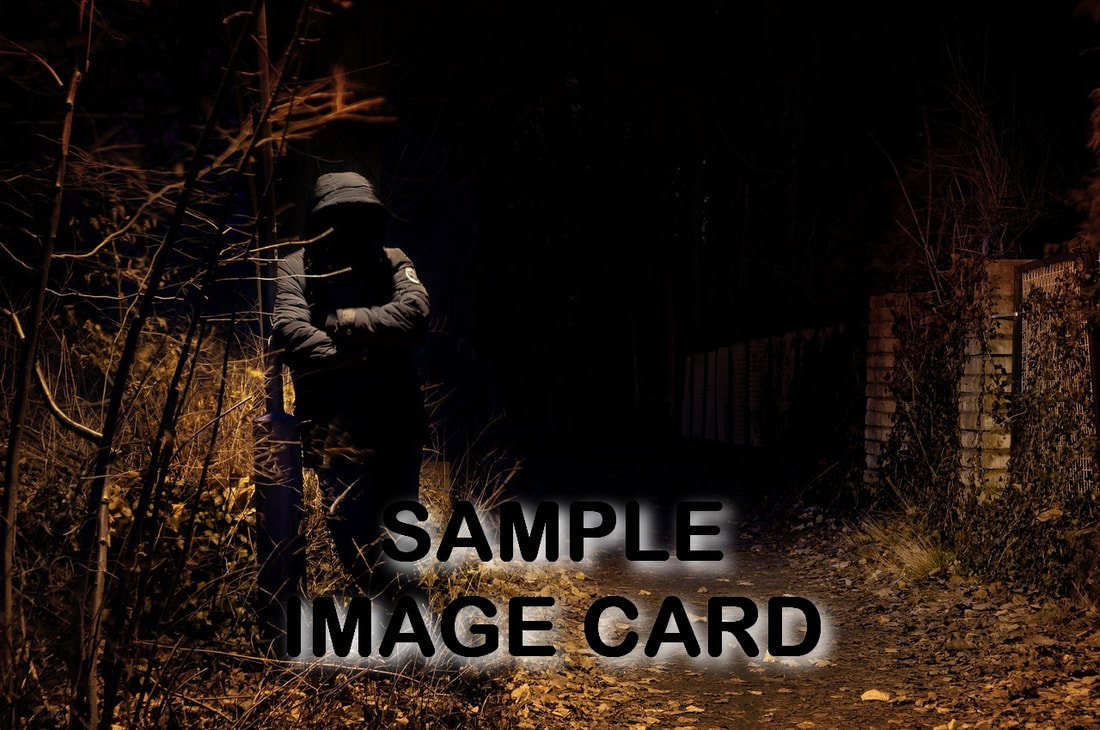Make decisions using images to learn to react, act & respond quickly |
|
DEFINITION OF SUCCESS: To quickly make ONE good FIRST decision based on visual stimuli & instantly act on it. Be confident, decisive, efficient, & explosive.
Decisions are more important than techniques. Our goal in IBDD is to supply an avenue to learn good decision and provide some simple, yet very effective techniques. Please consider attending additional in person or online classes that can help strengthen your non lethal, less than lethal and lethal skills. IBDD focuses on making ONE good FIRST decision and will give you an excellent place to practice new skills or sharpen new ones. Image Based Decisional Drills is a well thought out dry practice or live fire exercise with a deck of 21 Image Cards (with and without additional "tools") that provide IMAGES that will help you to recognize danger and to make smart decisions ahead of time. Our image based learning system is another beneficial step on your way to making good decisions quickly. Image Based Decisional Drills will help teach you to you access the situation using a mental simulation for a plausible course of action, allowing you to evaluate the strengths and weaknesses of the strategies in the content of the scenario. You may experience Altered Perceptions, like Auditory Exclusion, Stalling, Embellishment and more. What a wonderful gift of knowledge, to KNOW that is possible and learn from it. There are very few home training, self protection training for professionals or students, dry practice or live fire range exercises for the private citizen that focus on making lethal, less than lethal and non lethal decisions quickly. Our Image Based Decisional Drills are intended to fill in the gap in learning how to make decisions using images to provoke a response, decide which TOOL to use, and then ACT on that decision. From the time that a bad guy chooses you, you will have a very limited amount of time to make a decision. THEY choose how and when. Your actions need to be confident, quick and decisive. In all scenarios the image is happening to YOU, in front of YOU, beside YOU or behind YOU. YOU are your first responder and decisions need to be made quickly. |
|
If you choose to join Shelley, it is MANDATORY that each person attending class purchases an Image Based Decisional Drills KIT or NO-KIT BEFORE CLASS because you WILL TRAIN with your Image Based Decisional Drills KIT or NO-KIT during the ZOOM class. Only exception is if several people in your household are attending at once.
|
Image Based Decisional Drills Training/Practice Options:
|
It is very important to continue your “good decisions” training. One way is to simply read my short articles that are published monthly in Shooting Illustrated and Women’s Outdoor News (WON). I also have articles published with USCCA, NRA and more. My articles focus on “everything BUT the gun”. I have placed all my articles (links to articles and videos) in one spot so they are easy to find.
™ & © 2020 The Complete Combatant, LLC, Dahlonega, GA USA. All Rights Reserved
Customer Contact: [email protected] 404-936-6986
Customer Contact: [email protected] 404-936-6986
